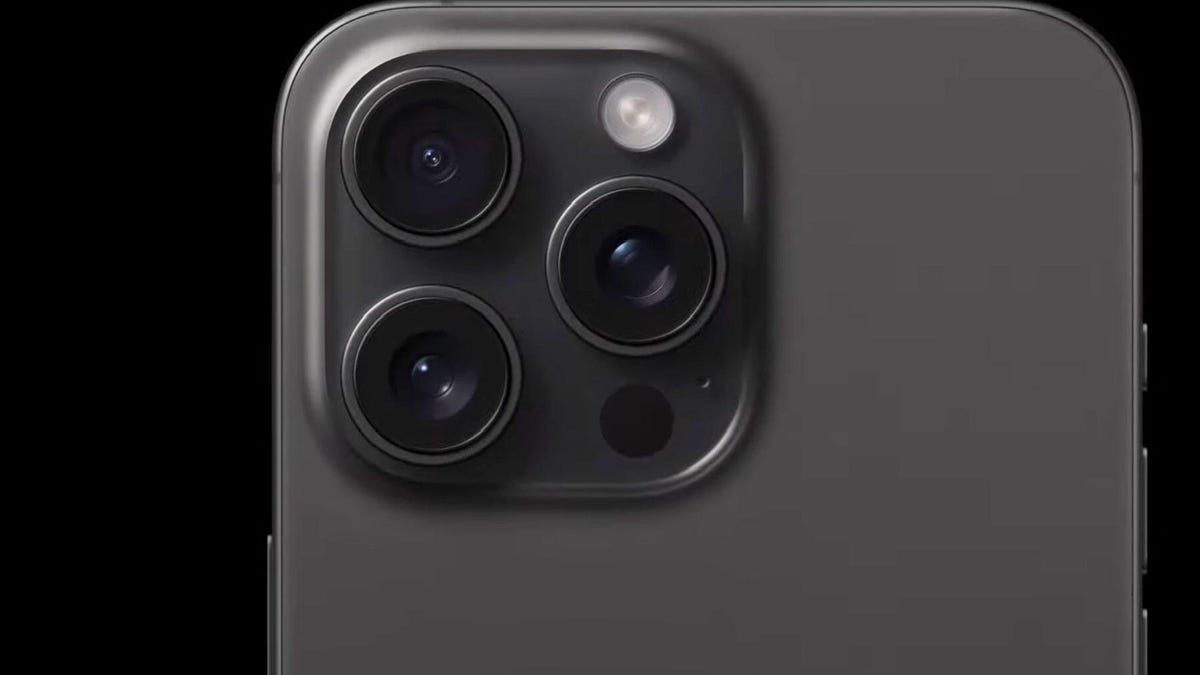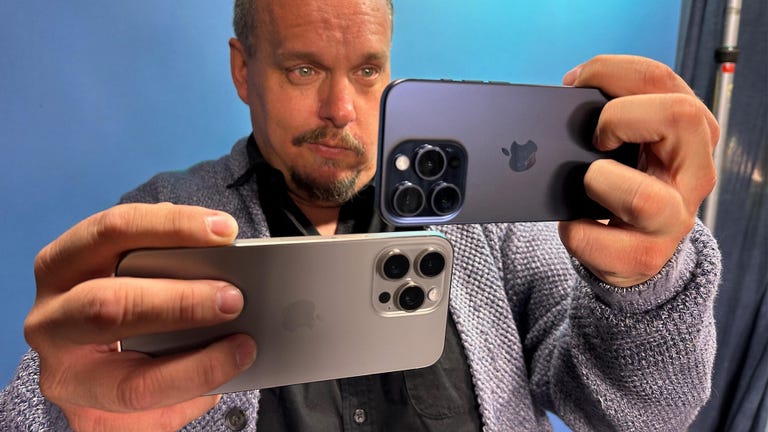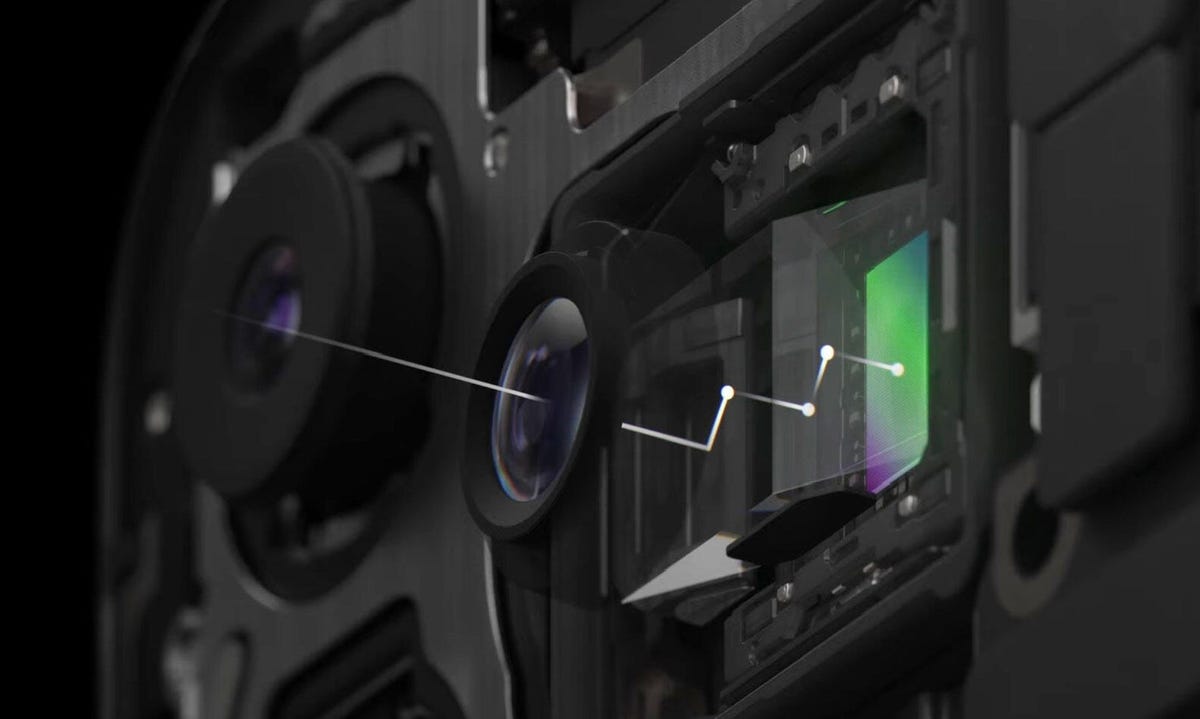
The iPhone 15 Pro gets a better main camera for new shooting flexibility, Apple said Tuesday. But the bigger photography change comes with the iPhone 15 Pro Max’s new 5x telephoto camera that should help customers get better photos of more-distant subjects, like wildlife, mountains or kids playing sports.
With new photographic flexibility in the new cameras, iPhone 15 Pro and Pro Max owners will have “the equivalent of seven camera lenses in their pocket,” Apple marketing chief Greg “Joz” Joswiak said at the company’s iPhone launch event.
The profusion of cameras on smartphones — and the increasing number of ways that phones can slice and dice data from modern image sensors — means smartphone photography is gradually reproducing the flexibility of traditional cameras’ zoom lenses. That’s a remarkable achievement, given how small smartphones are. But the broadest range is available only on expensive flagship phones.
The iPhone 15 Pro and Pro Max mostly have the same camera hardware, including the 48-megapixel wide-angle main camera and the 12-megapixel ultrawide camera. The main camera can shoot either at its native 24mm focal length equivalent (1x) or with tighter 28mm (1.2x) and 35mm (1.5x) framing with a new 24-megapixel resolution. And in a 2x mode, it can take 12-megapixel shots at a 48mm focal length.
The ultrawide camera has a 13mm focal length equivalent (0.5x) and when shooting up close goes into a macro mode.
That accounts for six of the seven camera options. The seventh option, telephoto, is where the two Pro phones diverge.
The iPhone 15 Pro has a 3x telephoto camera, an equivalent of 77mm, the same as the iPhone 14 Pro models. But the iPhone 15 Pro Max gets the 5x telephoto camera, with new image stabilization technology and a focal length equivalent of 120mm. Both those shoot at 12 megapixels by default.

Watch this: Review: The iPhone 15 Pro, 15 Pro Max Are Impressive
Because cameras are arguably the most competitive element on a new phone, the improvement helps keep Apple up to speed with Android phone rivals like Samsung and Google. It stops a step short of their 10x camera abilities, though.
For both phones, the 48-megapixel main camera is the most important, the go-to camera for most shots. Making its sensor physically larger improves its ability to capture more light and better color, which is important especially in low-light situations. Its wide f1.8 aperture lens also helps with dim scenes and nicer bokeh — the blurred backgrounds behind closer subjects. Apple also improved this camera with second-generation image stabilization, a technology that compensates for your shaky hands or for camera motion when taking video.
With the larger size and Apple’s computational photography abilities, the company can process the camera’s data to produce 24mm, 28mm or 35mm shots, and you can set any of those to be the default when you first launch the camera.

Apple says the iPhone 15 Pro Max has seven camera lenses: macro, 13mm, 24mm, 28m, 35mm, 48mm and 120mm. The 15 Pro has a 77mm telephoto instead of the 120mm, but the rest of the options are the same.
Meet the iPhone 15 Pro Max’s tetraprism camera
The iPhone 15 Pro Max uses a “tetraprism” to bend the light path four times before it hits the sensor. That’s a new variation on the “periscope” camera designs from Samsung, Google, Huawei and others that shoehorn large telephoto optics into a small smartphone body. The basic problem with telephoto cameras is that they require physically longer lens assemblies, and there’s no easy way around these limits of optics, physics and engineering. But instead of relying on bulky optics that won’t fit in a phone, periscope cameras use prisms or mirrors to bend the light path for a more roundabout route that’s compact.
Offering the periscope camera only on the larger iPhone 15 Pro Max recalls earlier years in iPhone history when the larger device had room for better camera equipment. In contrast, the iPhone 14 Pro and Pro Max had the same camera equipment, meaning people who wanted the smaller option didn’t have to sacrifice image quality.
Apple increased the default photo size on its main camera from 12 megapixels on earlier iPhones to 24 megapixels. Also new: You’ll be able to shoot 48-megapixel photos in the HEIC format. With the iPhone 14 Pro, you could only get 48-megapixel resolution if you used Apple’s ProRaw format. Photo enthusiasts often embrace such raw formats, but it adds extra complexity for average users.

The iPhone 15 Pro Max’s tetraprism reflects light four times inside the camera, enabling the longer light path necessary for telephoto camera lenses, without the bulk.
Another notable change Apple called out is new lens coatings. That may sound like a minor detail, but coatings help reduce lens flare problems like streaks and washed-out shots when you’re shooting toward the sun, streetlights, or other bright light sources. Smartphone cameras are particularly prone to lens flare problems compared with higher-end traditional cameras.
The iPhone 15 Pro also comes with a new portrait mode that Apple says is faster and works better in low-light conditions. And it stores depth-map information in the photo, which lets you switch back and forth between portrait and nonportrait modes after you’ve taken the photo, to see which you prefer.
I Took 600+ Photos With the iPhone 15 Pro and Pro Max. Look at My Favorites
See all photos
New video abilities
For serious video shooters, the Pro models also have some upgrades. First off, you’ll be able to record video to external storage devices — you can thank USB-C for that. That means you’ll also be able to shoot in Apple’s high-end ProRes format at 4K resolution at 60 frames per second, not just 30fps as before. Given how big ProRes files are, external storage is likely to be a welcome option.
Apple also is adding support for a log format for color recording, an option that is popular among pros who want to use color grading to get the look they want. That option also means iPhone 15 Pro models can now support the Academy Color Encoding System.
Filmmaker Stu Maschwitz was excited by the possibilities. “For the first time ever I am genuinely excited to shoot some video with my telephone,” he posted on Threads.
link







